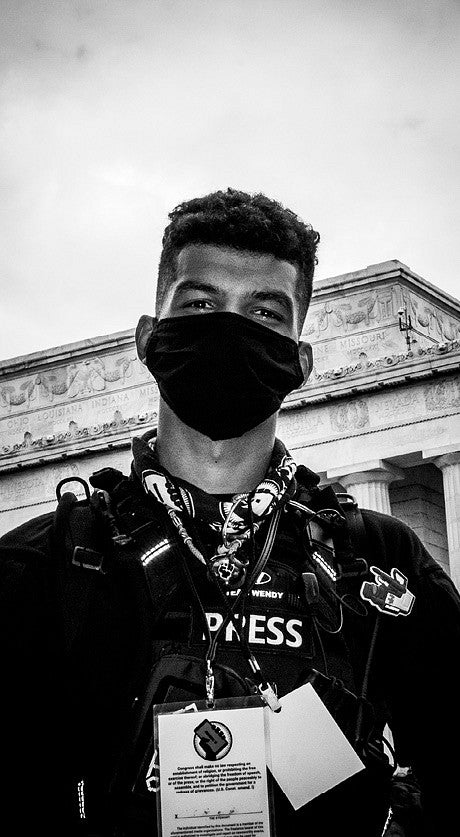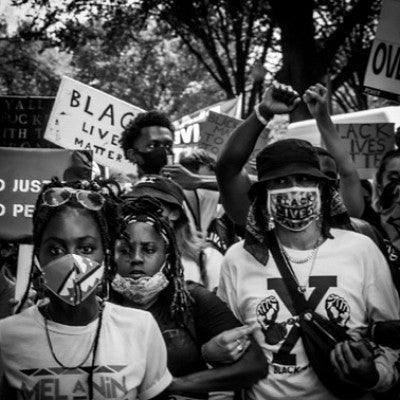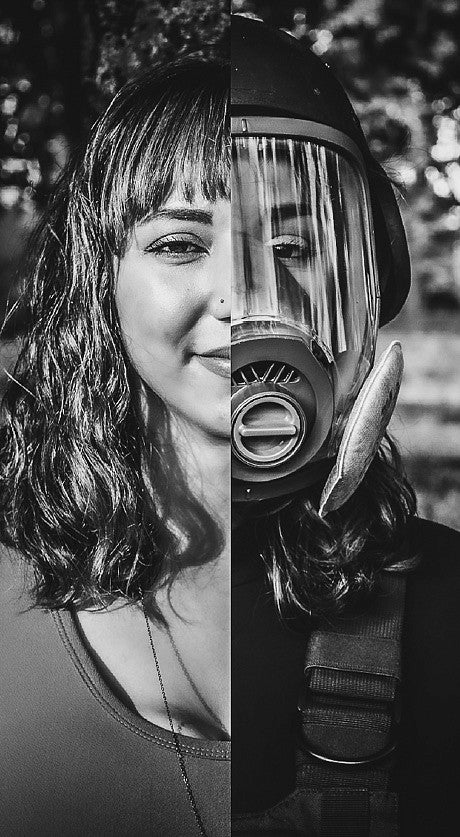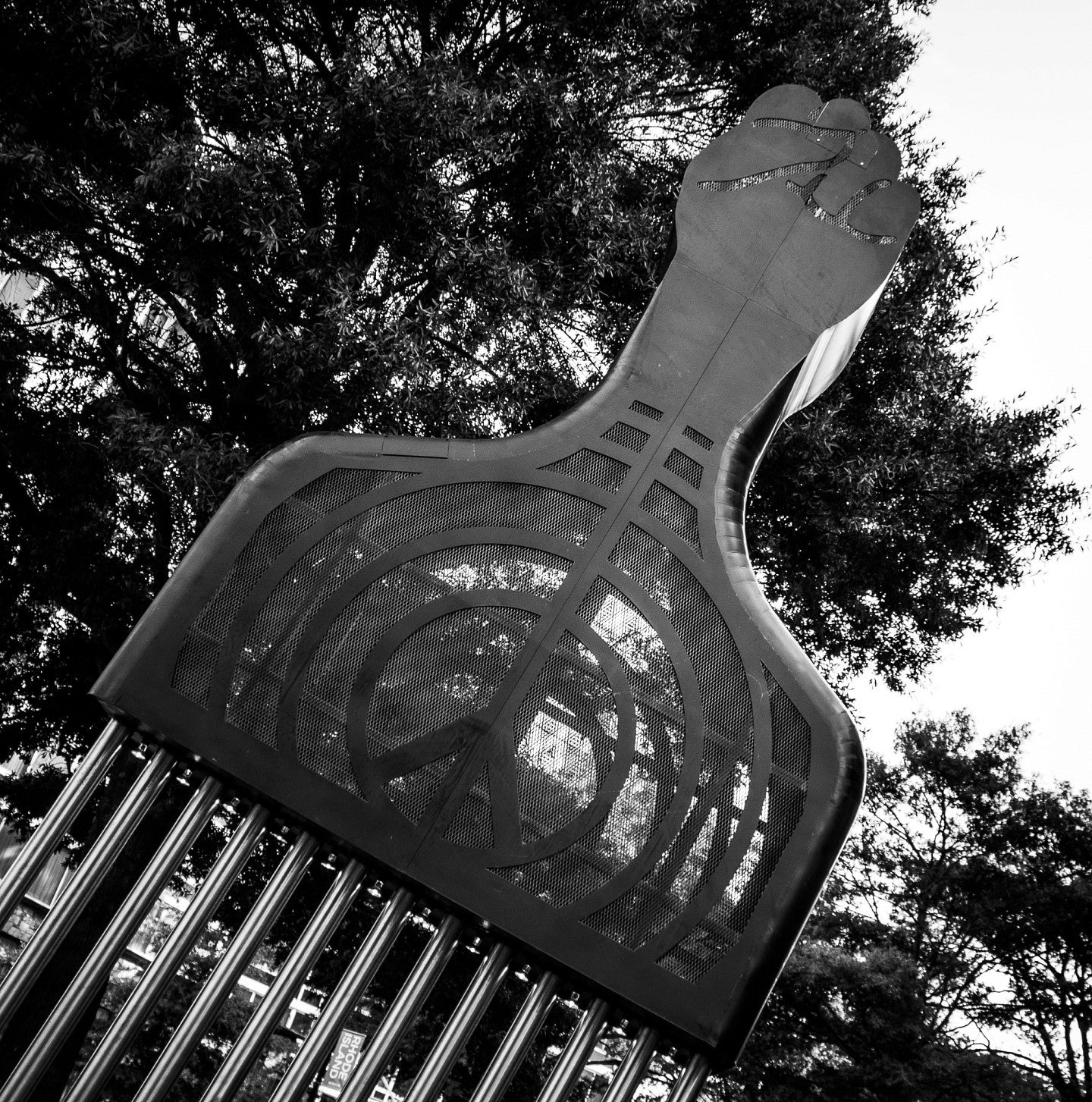As a person of color, Mya Lansing has always had racial injustice on her mind. But it was the Black Lives Matter protests of summer 2020 that made her an activist.

Lansing chose black-and-white for the photographs because, she says, “it lets you focus on the emotion, instead of just the picture itself.”
With Black History Month returning in February, she is considering new projects.
“I feel a calling to make a difference in the world and spread God’s light through creative outlets he has provided,” Lansing says. “Faith has been my most wonderful guide throughout my journey in photography and activism and I’m excited to see where it takes me in the future.”

(Left) Tre Stewart, live streamer, Lincoln Memorial, Washington, DC, August 28. “Tre is affiliated with Boop Troop Eugene, an outlet that provides real and ethical coverage of socioeconomic issues and protests. He’s got a sense of humor—‘delivering truth with some goof’—and he went out [to film] when it was more dangerous. He was always in the gear.”
(Right) Oregon Black Unity members, March on Washington 2020, Washington, DC, August 28. “We were supposed to march and way more people showed up than they were prepared for. It was like a flood of people. Everyone was really hot and tired and people passed out from heat exhaustion. It was crazy what people went through to be heard.”


(Left) Carissa Dez, live streamer, Portland, October. “She has endured being shot by pepper balls and inhaling large amounts of tear gas, just from trying to legally document events. The idea behind the picture is the contrast of everyday people going out at night and what it takes to be safe at these events—suiting up in riot gear to film and be safe, because it’s a free-for-all out there.”

(Above) All Power to All People, Hank Willis Thomas public art exhibition, Washington, DC, August 28. “This was at the Human Rights Campaign headquarters. It’s a huge monument. It was kind of cool to see what the city had done to recognize the movement.”
—By Matt Cooper, managing editor for Oregon Quarterly
Photos by Mya Lansing, Class of 2021
The Jordan Schnitzer Museum of Art awarded $2,500 grants to 20 Oregon artists whose projects reflect social justice efforts responding to systemic racism.
In addition to Lansing, the five below have ties to the UO; the museum plans an exhibition of the projects later this year:
Mika Aono, BA ’11 (art): Printing for Equity public screenprinting sessions based on civil-rights sayings such as “We are in this together” and “We are here for all”
Gabby Beauvais, graduate student, School of Journalism and Communication: Hear, I am, a documentary series in which she interviews athletes from track and field and other sports about “the power of using your voice as an athlete and as a Black person during these especially unprecedented times”
Jasmine Jackson, BA ’20 (journalism): The Scary Truth, a video series exploring the question, “What are your thoughts on the current climate?”
Ana-Maurine Lara, assistant professor, women’s, gender, and sexuality studies: Sanctuary, a collaborative, one-day performance “exploring women of color’s collective experiences of seeking refuge from persecution under the ongoing violence of colonization”
Malik Lovette, BA ’18 (art): mixed-media project that brings “awareness to the sacrifices that have been made to obtain liberation . . . [while] acknowledging how different forms of oppression prevent Black athletes from achieving true freedom”


